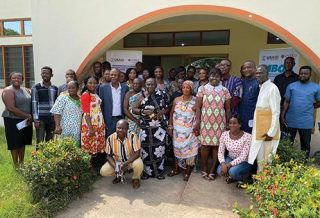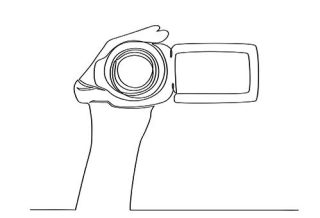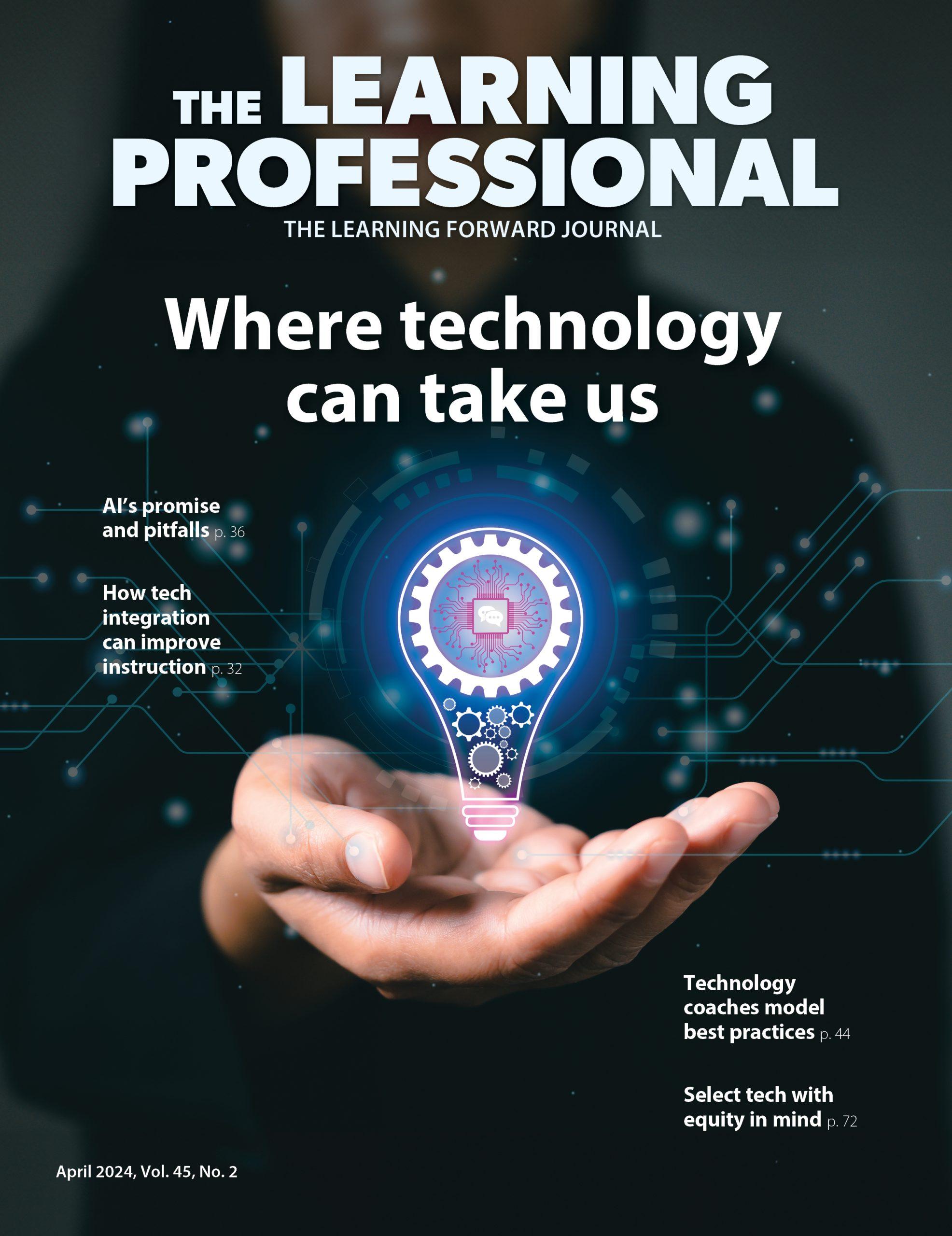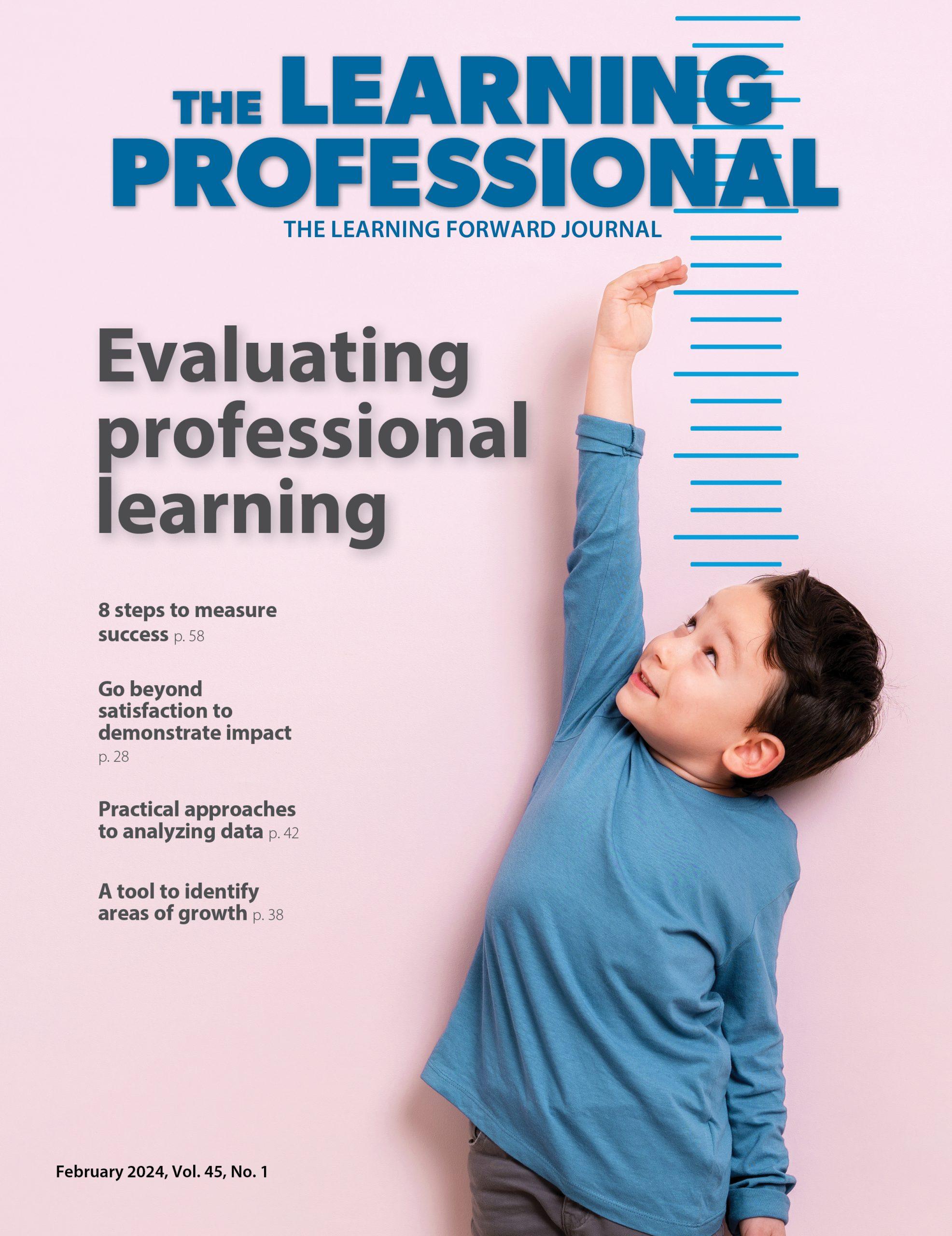TOOLS
The Long Beach approach
By Learning Forward
Categories: Continuous improvement, Facilitation, Implementation, Learning designs, Learning systems/planning, TechnologyApril 2020
Vol 41, No. 2
Professional learning has been a cornerstone of Long Beach Unified School District’s approach to comprehensive reform since the early 1990s. The myPD Unplugged podcast series (see https://lfstage.xyz/journal/beyond-the-basics/powered-up-podcasts/) is just one of the ways it is expanding professional learning content and access for educators in the district and beyond.
The Learning Professional’s editor, Suzanne Bouffard, talked with members of the team that created the series about why Long Beach is committed to ongoing, embedded professional learning and how it has designed its tools and strategies. Here are highlights of her conversation with assistant superintendent Pamela Seki, program administrator Nader Twal, and program specialists Jennifer Crockett and Amy Pendray.
Q: How did professional learning become a high priority in your district?
Pamela Seki: There has always been an understanding in our district that the most important person in the room is the teacher. We have always recognized that preparing the teachers to do the work is the main responsibility of central office support.
Nader Twal: Professional development has been the hallmark of the district for many years. It is baked into the culture. It played an especially important part in district redesign efforts in the 1990s. At that time, our community was going through some turmoil, with the closure of a Navy base and a surge in poverty and gang violence. We knew we needed to do more for our students, and strengthening our professional learning system became a key lever in that work.
Then in 2013, we received an iPD grant from the Bill & Melinda Gates Foundation. To accelerate our efforts to think differently about the next iteration of our professional learning systems, we were paired with Learning Forward as a consultant, which helped to build on a relationship we had had for many years, going back to when the organization was NSDC.
Seki: The relationship with our Learning Forward consultant, and later being part of Learning Forward’s Redesign PD Community, gave us permission to think differently, to go out on a ledge and try new things with our professional learning.
We were already providing a robust system of professional development to our teachers. That system relied on a face-to-face model with a presenter at the front of the room. It was working well for us — our teachers were learning and doing well, and we were receiving accolades.
Twal: But there was a pivot around the time the Common Core State Standards were introduced. There was suddenly a need for a larger volume and frequency of professional learning. We knew we needed to be creative about how to meet that need without dismantling the successful system we had built. Our challenge wasn’t how do we design professional development, but how do we build on our foundation without cracking that foundation?
We didn’t want to replace the face-to-face professional development. We wanted to enhance it and offer more so people could access the learning anytime and anywhere. With ESSA’s redefinition of professional learning, that need continues to grow, because if we are to design professional learning systems that are ongoing and collaborative, then it can’t be an event-based approach. An event can seed continuous learning, but the structures and systems have to be adapted to keep the learning going after the event.
Seki: We started to explore what we could do next, and we took the approach of “yes and … .” To do this, we began to use design thinking to move our work forward. We had a history of dabbling in design thinking through some of our grants, including one from the Bechtel Foundation on improving math teaching and learning aligned to Common Core.
Q: How did design thinking shape your approach to professional learning?
Amy Pendray: I was involved in some of the [PD department’s] focus groups when I was a teacher, and they were using design thinking to build empathy for the revisioning of professional learning in Long Beach. Nader asked us to dream, to imagine, “What would your ideal professional learning experience be?”
It took a while to feel free. But eventually, we started coming up with all kinds of ideas. Some were really out there, but some became the things we’re currently doing. For example, one teacher suggested learning from holograms in her classroom. We couldn’t do that, of course, but from that idea came the work we are currently doing on using best practice videos to fuel professional learning.
Twal: During the focus groups, participants said, “We want to see our teachers teaching our kids.” If they were seeing kids and teachers who were not their population, that was going to be an empathy barrier for them.
Recognizing the importance of this feedback spurred us to train our curriculum staff to create and use video of our teachers in the field, rather than using video exemplars from outside the district. We had to train our whole curriculum staff on the technical ways to capture best practice, record it, package it, and label it so that teachers could find content that met their needs. We wanted teachers to have a personalized experience.
Jennifer Crockett: About 2014, I was one of the teachers Nader and Amy trained in making videos, and I moved over to the PD team about halfway into the design thinking process, where the team was brainstorming ways to bring our teachers’ asks to fruition. Design thinking is very messy. [But it gives you] the permission to learn. We were given the task of trying out ideas we were interested in and then prototyping them. We didn’t have to produce the perfect product, but we needed to learn about the process of doing it and think about what further learning we needed to do.
Pendray: It’s not always easy to give yourself that permission to learn and make a mistake. But that’s what we learned to do.
Q: How did the idea for a podcast come about?
Twal: We were ideating about anywhere, anytime learning, and we all just started spitting out thoughts and putting them on a wall. In the design thinking process, one of the ways to move to action is to put the ideas into four quadrants based on how rational and doable they are and then pick two to try. The two we picked were: How would we redesign physical space for learning, and how might we use podcasts? We liked the idea of a podcast because if you’re on your way to work you can listen to keep the learning going. We began to iterate with a low-resolution prototype on Amy’s phone. Since then, we’ve gone through so many prototypes. We worked on it for almost two years with multiple failed attempts at a small scale. We work with the motto of constantly failing forward to get to success sooner.
Pendray: We have had the opportunity to do a lot of learning together at this table about podcasts. We’ve learned that sound quality, length, and many other factors matter. We also came to realize the power of working with a thought partner, both internally and on the podcast.
Crockett: We have learned that hearing the experts’ voices makes a huge difference, even for people who have been studying the experts’ work for a long time.
Seki: People learn best from a story. With a podcast, people get to listen to people tell their own stories. So we’ve taken the best of what we do and made it personal and asynchronous. What an evolution from where we started, where people would come to us.
Crockett: And with the podcast, we didn’t want it to be another podcast that people listen to and then move on. We wanted the learning to continue, so we created facilitation guides for those who wanted to share the learning with others. We also recognized that the podcasts could provoke team learning and wanted to spark ideas for how people might extend their conversations around the content of the podcast, helping them to get closer to applying what they heard in their own context.
Twal: We’ve learned that this way of doing things is resonating in and outside of our district. Anecdotally and based on the limited data we have from the podcasts, we’ve got people using it all over the U.S., such as Florida, Georgia, the Northeast. And I’ve had a number of principals call and say, “Thank you for planning my next staff meeting [by providing the facilitation guide].”
Q: Is this part of a movement toward personalization?
Twal: When we redesigned our professional development approach, we created a personalized process rather than an individualized process. The goal was to build internal capacity around common language and pedagogy. So the content of the professional development may shift, but the actual definition of teaching excellence does not shift. It is always anchored in the California Standards for the Teaching Profession.
Seki: Creating this common language and pedagogy is important [across the district and teacher education]. There is a long history of relationship building in this district. Long Beach is a big city with a small city feel, and there is a sense of collaboration here. Because of that, we have been able to leverage a K-16 partnership with a very vibrant California State University in Long Beach. Our staff teach some classes at the university, for example. This has helped us create some common language and pedagogy. So before teacher candidates even start student teaching, they use similar language.
Twal: For district teachers, we created a four-step process grounded in this common language that allows for step-by-step movement and for teachers to choose how much to do. We can’t compete with Google. So we framed it as, “You are professionals, and you don’t have time to weed through the stuff you find online.” What we provide is curated so they’re not wasting their time. And then if they want to go online after and find more resources, they’ll know what the success criteria are.
Q: What is one of the biggest changes you’ve seen in professional learning over the years?
Twal: In the traditional way [of facilitating professional learning], we expected ourselves to be experts. But we have reframed that to position ourselves as lead learners. Our work is all about ongoing learning and collective efficacy. It’s not about who knows the most, but about who knows how to learn and make the most of the information.
Learning Forward is the only professional association devoted exclusively to those who work in educator professional development. We help our members plan, implement, and measure high-quality professional learning so they can achieve success with their systems, schools, and students.
Categories: Continuous improvement, Facilitation, Implementation, Learning designs, Learning systems/planning, Technology
Recent Issues
LEARNING TO PIVOT
August 2024
Sometimes new information and situations call for major change. This issue...
GLOBAL PERSPECTIVES
June 2024
What does professional learning look like around the world? This issue...
WHERE TECHNOLOGY CAN TAKE US
April 2024
Technology is both a topic and a tool for professional learning. This...
EVALUATING PROFESSIONAL LEARNING
February 2024
How do you know your professional learning is working? This issue digs...











